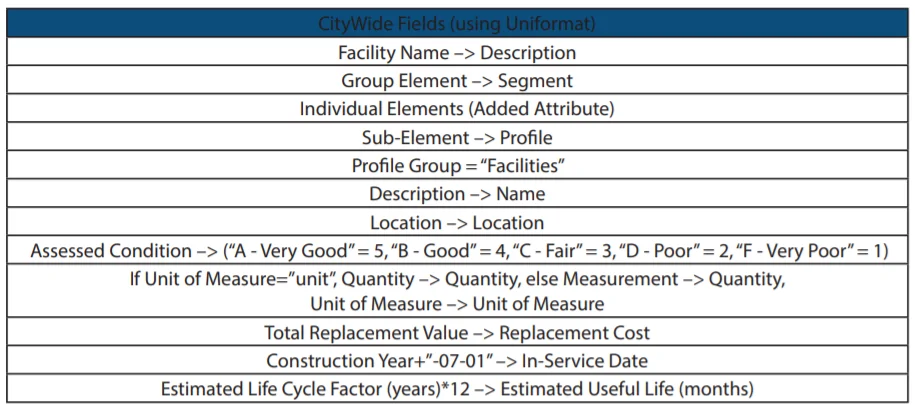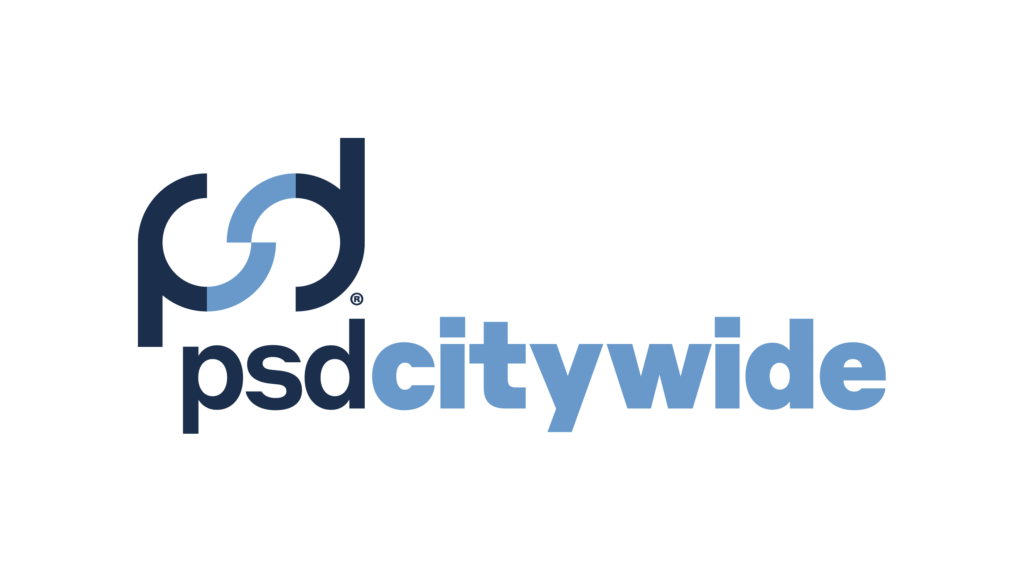The Town of Whitby has implemented robust infrastructure asset management practices, which has allowed the Ontario community to disaggregate pooled assets and refine its data, enabling more informed and effective asset interventions. The Town prioritized several components of their asset management program, including data disaggregation and the development of service area asset management plans (AMP). Each AMP takes a deep dive into a particular asset category, outlining a long-term vision for the whole of the Town’s assets. Because the focus was on creating a strategy and collecting information on each asset class, the Town was able to enrich its data and begin building out a comprehensive asset inventory within asset management software.
Whitby is located within Durham Region and is considered to be a part of the Greater Toronto Area (GTA). With a diverse range of assets, varying from roads and bridges to facilities, parks and a marina, the Town has to be strategic on how it spends municipal dollars to maintain its infrastructure.
The Town’s population has seen consistent growth, with 2016 census data putting the population at 128,377 and 2019 data showing an approximate population of 136,130. As areas in this region continue to experience significant growth, proper asset management can assist with effectively managing the need for increased services and demand on infrastructure. The Town has already taken considerable strides towards better infrastructure management, with the collection of more accurate data a key requirement of planning for the Town’s future use of assets. This case study will detail Whitby’s approach to collecting, organizing and utilizing their asset data, and how it has assisted them with advancing their asset management practices.
Consolidating TCA and Engineering Data
As a first step, the Town needed to bridge the gap between tangible capital asset (TCA) data and engineering data. Often, an organization will have two (or more) separate sets of asset data that reflect the differing areas of the organization (i.e. financial data vs field data). Consolidating this information provides a more holistic picture of the asset allows for better long-term planning and reporting, and ensures that departments can speak the same language when referencing an asset.
The Town’s datasets originated from two different places: TCA dataset updates come out of the capital budget and engineering datasets come from GIS data. Staff looked at all discrepancies between the two datasets and determined if these assets still existed. If an asset existed, it would be added to the missing dataset and if it did not, it would be disposed of. In many cases, this was a simple matching exercise. However, in others, it required breaking out components from pooled assets, or adding assets as components of pooled assets in the TCA database.
A complex example is the way the Town’s trails were initially added to the database. Since these assets were originally added, the trail segments and import IDs had changed significantly. To fix this, staff found legacy trail GIS data, updated the initial quantity to reflect the true paved area of the original trail, and used transfers to split the trails into their current segments and proportionally separate the historical value among the new segments.
While the practice of linking data and identifying discrepancies between datasets can be a time-consuming process, it produces significant long-term benefits. For example, the Town’s annual requirement (i.e. the amount necessary to maintain the current infrastructure) for whole buildings using just TCA data was $4,245,757. However, when the Town broke out facilities from whole buildings using Uniformat’s elemental classification of buildings (i.e. each segment of the building was identified), and took into consideration both TCA and engineering data, the annual requirement jumped to $10,628,627, representing an increase in both dollar amount and percentage of budget required to maintain assets. Therefore, the Town was undervaluing the annual requirements for facilities when just using TCA and whole building information, which would lead to greater long-term costs and potential asset failure due to the utilization of inadequate lifecycle events. Because the Town now has more accurate data, optimal lifecycle strategies can be employed to get the most value out of each asset and long-term financial planning will become far more effective.
Disaggregating Pooled Asset Data in an Asset Management Program
The Town has taken considerable strides towards breaking down their facilities information from whole buildings to include all elements of the facility. When first undertaking this initiative, the number of assets in the Town’s inventory under the facilities category was 252. It is now 4094. The facilities category originally contained historical values for all whole buildings with several updates and additions as indicated by the budget. Whole buildings were pooled assets, which meant there was no way to effectively dispose of a component, such as a boiler, from a whole building when it was replaced. Such assets were simply added without disposals accounted for.
The Town is currently preparing facility condition assessments for all fifty-nine buildings. To date, condition assessments have been completed for thirty-six buildings, with the additional twenty-three buildings expected to be assessed by summer 2020. The amount of assets documented for facilities is anticipated to be in the 40,000 – 50,000 range. This work has required a two-year process of training co-op architecture students from Durham College, with 16 students last year and 14 students this year. The students are trained for three hours and work in pairs for ten weeks each. Having assessed condition data versus aged based data on Whitby’s facilities will greatly assist in accurate reporting and continue to help with properly valuing Town assets.
In uploading the data, staff allowed the whole building asset to carry the historical value and the building component to carry the replacement cost. This would prevent any issues with balancing PSAB figures between years and would allow for accurate asset management program reporting.
Breaking out whole buildings into elements and using assessed condition had a similar impact as including both TCA and engineering data. It again showcased that the Town was mis-valuing assets, therefore not effectively planning for asset repair and replacement. When looking at the maintenance backlog for whole buildings, the cumulative total was $23,923,166, however, once broken into elements, the backlog’s cumulative total was adjusted to $978,757, this time representing a reduction in necessary maintenance due to a comprehensive understanding of asset condition. A thorough understanding of the components of the Town’s facilities demonstrated that the maintenance backlog wasn’t nearly as severe compared to looking at whole building data. With a more accurate calculation of the backlog, Whitby’s public works and finance teams can conduct far more effective long-term planning.
Standardizing Data
Using a consistent format for recording data assists with overall reporting and ensures that accurate information is being collected on assets in order to develop the most effective financial and lifecycle strategies. As previously mentioned, the Town uses Uniformat, which breaks out facilities into elements and classifies them using a defined system. Using this method is a way to employ simple standards and reduce the number of decisions staff have to make about how to break down and account for assets. Integrating Uniformat into the Town’s asset management software, PSD Citywide, involved making decisions about how to map Uniformat fields to PSD Citywide fields. The following shows how this was accomplished:

Mapping sub-elements to profiles allowed staff to use the upload center’s profile restrictions as an extra layer of quality control when managing the large amount of data coming from this process. Therefore, ensuring that data validity is protected, regardless of who is dealing with the system. Through using standard data classifications, all necessary information for accurate and effective reporting will be collected, leading to a more holistic understanding of the Town’s assets.
Resource constraints are one of the foremost reasons why municipalities struggle to implement asset management priorities and conduct necessary data work.
Challenges and Constraints
Undertaking large-scale database restructuring and implementing asset management priorities can often seem like an impossible task with competing priorities and limited staff resources. Whitby experienced two overarching challenges with their program development:
1) Resources were the main constraint for the facilities division. The Town retained twenty-six co-op students over 12 months in order to help gather information, which has been a major time constraint. The plan is to have all the data collected by summer 2020, in order to use the data for the budget planning process and to finalize the asset management plan (AMP).
Resource constraints are one of the foremost reasons why municipalities struggle to implement asset management priorities and conduct necessary data work. However, the Town has been able to tackle the work by taking it one task at a time with assistance from third parties.
2) It also required time and resources for the Town to decide how to customize their asset management database in order to best suit their particular needs. In constructing the database in PSD Citywide, staff ran into an issue with PSAB capital thresholds. Due to not using these thresholds for asset management reporting, staff have to flag all assets falling under the PSAB threshold with “Exclude from PSAB” and “Ignore Threshold.” Staff will continue to discuss the best options, including potentially eliminating thresholds altogether. However, it is currently easier to filter those assets that should be excluded.

What’s Next?
The Town is committed to continuing working on asset management priorities, including consistently improving its facilities data and using asset management software to build out long-term financial strategies for assets. A main priority will be to continue to maintain the Town’s database through updating it annually. Staff are planning to use asset profiles within all asset categories to incorporate features such as asset degradation curves within their PSD Citywide software system. In addition, staff will evaluate and update lifecycle management strategies beyond just road assets in order to capture the maintenance performed on all Town infrastructure.
All of these planned initiatives are effective because of the previous steps the Town took to organize their data. For example, with the updates to the Town’s facilities data, it will enable staff to create a lifecycle management strategy that takes into consideration all building components, ensuring that scheduled maintenance and repair activities are being effectively prioritized. The benefits and cost savings from continuing to build out the Town’s asset management program will only continue to grow.
STEFANIE FISHER, MA received her Honour’s bachelor’s degree from King’s University College at Western University in Political Science and her master’s degree from the Norman Paterson School of International Affairs at Carleton University. As a part of her master’s research she looked at municipal critical infrastructure and the different regional infrastructure funding programs such as the Ontario Gas Tax Fund. Stefanie has extensive experience in providing informative briefings on grant programs and legislative changes for municipalities, and received her Institute of Asset Management Certification in 2018.



